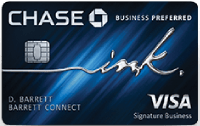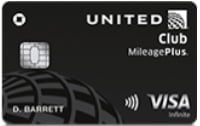The points and cash back rewards can enhance the value you get from your credit card, but choosing between “credit card points vs cash back” can be confusing. Each option has benefits tailored to different spending habits and financial preferences. Whether you prefer the flexibility of points or the simplicity of cash back, knowing the distinctions will help you pick the right rewards program for your needs.
Credit card points, like The Platinum Card® from American Express or Chase Sapphire Preferred® Card, can be very appealing. They promise to offer valuable travel perks and exclusive benefits.
Below, without any delay, we will help you to decide which reward option is best for you.
What are Credit Card Points and Miles?
Credit card points and miles are rewards cardholders earn when purchasing specific credit cards. You typically earn points based on spending categories like travel, dining, or groceries. These points accumulate over time, and you can redeem them for various rewards, such as flights, hotel stays, merchandise, gift cards, or statement credits, providing flexibility to suit your needs.
Miles, commonly associated with travel credit cards, are often earned similarly to points. They are designed explicitly for travel-related redemptions, such as flights or hotel stays. These miles can help you save on travel expenses. Both provide flexible reward options. You can transfer them to budget airlines or hotel loyalty programs for additional value, maximizing your redemption potential.
? Related – The Best Credit Cards for Digital Nomads and Travelers
How Do Credit Card Points Work?
Credit card points are earned based on how and where you spend. For example, if you have a card that offers 2x points on travel and dining and 1x points on other purchases, every time you spend $100 on a flight or at a restaurant, you earn 200 points.
Other purchases, like –
- Groceries
- Online shopping
- Gas
- Utilities
- Streaming services
- Clothing
- Entertainment (movies, concerts, etc.)
It may only earn you 100 points for every $100 spent.
Depending on the program, you can redeem credit card points for various rewards as your points accumulate. For instance, you might use 25,000 points for a round-trip flight or 10,000 points for a night at a hotel. Some programs also allow you to redeem points for cash back, gift cards, or even merchandise. An example would be using Chase Ultimate Rewards to transfer points to partner airlines or hotels.
Benefits of Credit Card Points
The critical benefit of credit card points lies in their versatility, offering a range of options for redeeming rewards. Whether you’re a frequent traveller or prefer other perks, points can be valuable to enhance your spending power. With many redemption possibilities, they provide flexibility that cash-back cards might not.
Here’s a closer look at the critical benefits –
- Flexible Redemption – Redeem points for travel merchandise or transfer them to partner loyalty programs like frequent flyer miles.
- High Value for Travelers – Points can offer significant value, mainly when used for luxury travel experiences that would otherwise be expensive.
- Bonus Categories – Many cards offer extra points in categories like dining, travel, or groceries, allowing you to accumulate points faster.
- Partner Transfers – Transfer points to airline or hotel loyalty programs for additional rewards and value.
Points and Miles Credit Cards
Many credit cards offer generous point-based rewards with categories that suit different spending habits. Travel credit cards often reward higher points for travel-related purchases like flights, hotels, and car rentals. These cards also frequently offer sign-up and credit card referral bonuses where you can earn thousands of points after meeting a minimum spending requirement within the first few months.
Some widespread points and miles credit cards include –
- Chase Sapphire Preferred® Card – Offers 2x points on travel and dining and a substantial sign-up bonus.
- The Platinum Card® from American Express – Provides 5x points on flights booked directly with airlines or through Amex Travel.
- Citi Premier® Card – Earns 3x points on air travel, hotels, and dining, with points redeemable through Citi’s ThankYou® Rewards program.
- Capital One Venture Rewards Credit Card – Offers 2x miles on every purchase, plus the ability to transfer miles to partner airlines and hotels.
- United Explorer Card – Earns 2x miles on United purchases, dining, and hotels, with travel perks such as priority boarding and free checked bags.
These cards maximize rewards for frequent travellers and those aiming to get the most out of their everyday spending.
Strengths and Limitations of Credit Card Points
Credit card points can offer excellent value, but it’s essential to understand both their strengths and limitations. While points can be flexible and valuable, they also come with limitations that may only suit some cardholder’s needs. Knowing how and when to redeem points is critical to maximizing their potential value.
Let’s look at the strengths and limitations –
Strengths –
- Flexible redemption options, especially for travel like flights and hotels.
- Points can offer potentially high value when redeemed strategically, especially for luxury travel and premium experiences.
- Transferring points to partner programs expands your options with airlines and the biggest hotel chains.
- Bonus earning opportunities include extra credit card points for spending in categories like travel, dining, or groceries.
Limitations –
- Points can expire or devalue over time.
- Redemption value can vary depending on the program and type of reward.
- It is more complex to manage than cash back.
- Many point-based cards have higher annual fees, which may reduce overall reward value.
?♀️ Also read – 10 Best Credit Cards Offering Priority Pass Lounge Access
What are Cash Back?
Cash back rewards return a percentage of your spending as cash or a statement credit, making it a simple and direct credit card reward. Typically, cash back is earned flat, such as 1.5% on all purchases, or through tiered categories, like 3% on dining or 5% on groceries. Some cards also offer rotating bonus categories that provide higher cash back rates on specific purchases during set periods.
It helps you earn more in certain spending areas. Unlike points or miles, cash back is straightforward to use. It allows you to redeem rewards for statement credits, direct deposits, or gift cards without worrying about fluctuating redemption values or complicated reward systems. It is famous for those seeking simplicity, reliability, flexibility, efficiency, convenience, and consistency.
How Do Cash Back Work?
Cash back is straightforward; you earn a fixed percentage back in cash for every qualifying purchase.
Some cards offer tiered cash back rates for different spending categories, like –
- Groceries
- Gas
- Dining
- Travel
- Online shopping
- Utilities
- Medical Sore purchases
While others offer a flat rate on all purchases, giving you the exact percentage back regardless of where or how you spend.
For example, the Blue Cash Preferred® Card from American Express offers 6% cash back on groceries and streaming services, 3% on transit, and 1% on all other purchases. Some cards, like the Citi® Double Cash Card, offer 2% cash back on every purchase – 1% when you buy and 1% when you pay off your balance. It is typically redeemed as a statement credit, direct deposit, or check.
Benefits of Cash Back
Cash back cards are simple and transparent, providing an easy way to earn rewards without the complexities of point systems. You receive cash rewards that you can apply directly to your credit card balance or transfer to your bank account, offering immediate value. It often has no annual fees, making it a cost-effective choice for everyday spending.
Take a closer look at the essential benefits –
- Straightforward Rewards – Earn a fixed percentage back on every qualifying purchase, allowing you to track your earnings quickly.
- No Points Devaluation – Unlike points, cash back does not expire or devalue over time, ensuring that your rewards retain their total value.
- Flexible Redemption Options – Use cash rewards as a statement credit, direct deposit, or even gift card, giving you flexibility in using your earnings.
- Tiered Cash Back Rates – Some cards offer higher cash back rates in specific categories, such as groceries, gas, or dining, helping maximize your rewards based on your spending habits.
Cash Back Credit Cards
Many cash back credit cards offer competitive rates. Some cards provide bonus categories that can earn you higher rewards, such as 5% back on groceries or 3% back on dining. Flat-rate cash back cards provide simplicity, offering the same cash back rate for all purchases, which can be ideal for those who prefer ease and consistency. This variety lets consumers choose a card that suits their spending habits and goals.
See some popular cash back cards to consider –
- Chase Freedom Flex℠ – Offers 5% cash back on rotating quarterly categories and 1% on all other purchases.
- Blue Cash Preferred® Card from American Express – Earns 6% cash back on groceries, 3% on transit, and 1% on all other purchases.
- Citi® Double Cash Card – Provides 2% cash back on every purchase (1% when you buy and 1% when you pay).
- Discover it® Cash Back – Offers 5% cash back on rotating categories and 1% on all other purchases.
- Capital One Quicksilver Cash Rewards Credit Card – Earns 1.5% cash back on every purchase, with no annual fee.
These options cater to various spending habits, making maximizing cash back rewards easier.
Strengths and Limitations of Cash Back
It can provide immediate value, but it’s essential to understand both their strengths and limitations. While cash back is easy to earn and redeem, it may offer a different high-value potential than points for frequent travellers. Maximizing your cash back is critical to getting the most from your rewards.
Let’s look at the strengths and limitations –
Strengths –
- Simple, easy-to-understand rewards system that provides cash directly back.
- No concerns about fluctuating redemption values, ensuring your rewards maintain their worth.
- Often available with no annual fee, making them a cost-effective option for everyday spending.
- Immediate cash rewards can be applied as statement credits or deposited directly into your bank account.
Limitations –
- Less potential value compared to points for high-end travel experiences, which may offer greater rewards.
- There are fewer opportunities for maximizing rewards than strategic point redemptions that leverage bonus categories.
- They provide different flexibility for travel perks or upgrades than points can.
A Quick Comparison of Credit Card Points vs Cash Back
The differences are critical when choosing credit card points vs cash back rewards. This knowledge helps you make an informed decision. Credit card points allow flexible redemption for travel or merchandise and enable transfers to partner programs. They can be complex and may devalue. Cash back provides a straightforward fixed percentage back on purchases, making it easy to redeem.
Below is a comparison of the two options to help you decide which best suits your needs –
| Feature | Credit Card Points | Cash Back |
| Redemption Options | Flexible; can be used for travel, merchandise, or transferred to partners | Direct cash, statement credits, or gift cards |
| Value Potential | Potentially higher for luxury travel experiences; average redemption value can be 1.5 to 2 cents per point | Generally lower than points for travel; average cash back rate is 1.5% to 5% |
| Complexity | More complex to manage; requires understanding of redemption strategies | Simple and straightforward |
| Expiration | Points may expire or devalue over time | Cash back does not expire |
| Annual Fees | Many cards have higher annual fees; the average fee is around $95 | Often available with no annual fee, average fee is $0 |
| Earning Potential | Bonus categories may offer higher points, up to 5x points on specific categories | Fixed percentage on all purchases; typically 1% to 5% back |
| Usage Flexibility | More versatile for various rewards | Easy to use and understand |
The choice of credit card points vs cash back depends on your preferences, spending habits, and financial goals.
Additional Considerations
When deciding credit card points vs cash back, it’s essential to weigh the factors that matter most to you. Consider your spending habits and whether you prioritize immediate rewards or the potential for more excellent value through strategic redemptions. Think about how often you travel and if you prefer the flexibility of points or the simplicity of cash back.
1. Assessing the Personal Value of Your Rewards
If you travel frequently and enjoy luxury upgrades, points and miles can offer great value, with studies showing that 43% of cardholders prefer points for travel-related redemptions. Cash back may be a better fit if you like simplicity, with 55% of consumers opting for cash back for its ease and immediate benefits.
2. Variability in Redemption Value
The value of points can vary greatly depending on how you redeem them. For example, redeeming points for travel can yield up to 2 cents per point, while gift cards or merchandise may only offer around 0.5 cents per point. In contrast, cash back provides a consistent value, with most cards offering 1% to 5% back on purchases.
3. Ease of Redeeming Your Rewards
Cash back is typically the easiest to redeem, with straightforward options like statement credits or direct deposits, with 67% of cash back users reporting satisfaction with ease of redemption. Points require understanding redemption rates and partners, making maximizing rewards more complex.
4. Learning the Program’s Partners
Points programs often work with transfer partners, like airlines or hotels, to increase redemption options.For example, programs like –
It allows you to transfer points to partners such as –
48% of cardholders who transfer points to partner programs report increased value. Learning how to maximize these transfers is critical when using a points-based card.
Credit Card Points are an Excellent Choice for Frequent Travelers
Credit card points are an excellent choice for frequent travellers who want to maximize their travel experience. Redeeming points for flights and hotels, or even upgrading to business class, can offer tremendous value that cash back cannot match. For instance, transferring points to airline partners can sometimes double or triple their value. Many point-based cards offer travel perks like airport lounge access, free checked bags, and travel insurance, adding more value to your journeys.
Recommended read – Priority Pass vs LoungeKey – Which is Right for You?
Do You Like Simplicity?
Cash back is the way to go if you prefer a hassle-free rewards program. It offers simple, straightforward rewards that don’t require much effort or planning to redeem. Cash back applies easily to your credit card balance or deposits directly into your bank accounts, with no complicated redemption strategies. It makes a popular option for those seeking simple rewards.
Combining the Best of Both Worlds
Some people opt for the best travel credit card to make their trips more comfortable, earn points on travel purchases, and get a cash-back card for everyday spending. This strategy lets you enjoy the best of both reward systems while maximizing value. For example, you can use points for high-value travel redemptions and rely on cash back for groceries, gas, and daily purchases. By combining both types of cards, you can tailor your rewards strategy to suit your lifestyle and maximize your earnings.

Wrap it Up!
The “credit card points vs cash back” discussion once and for all! It all comes down to your spending habits and what you want from your card. Credit card points can be advantageous if you invest time maximizing your rewards. They offer more significant long-term benefits, especially with travel perks. If you value simplicity and predictable rewards, a cash back credit card is likely your best option.
Before you choose, assess how you plan to use your rewards and decide which program aligns with your financial goals.
Need help deciding which option is best for you? ?
Relax! Relo.AI can help you find the perfect card without all the stress. We’ll look at how you spend your money and what kind of travel you do, then recommend the best options for your unique needs.
For frequent travellers considering relocation, we also handle everything from travel logistics to settling into your new country.
Book a FREE consultation today for guidance on your financial and relocation plans.











